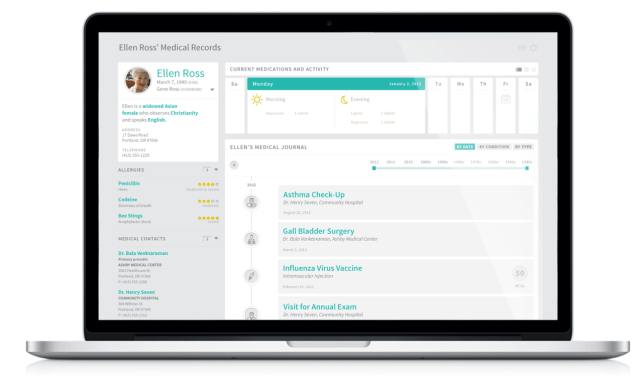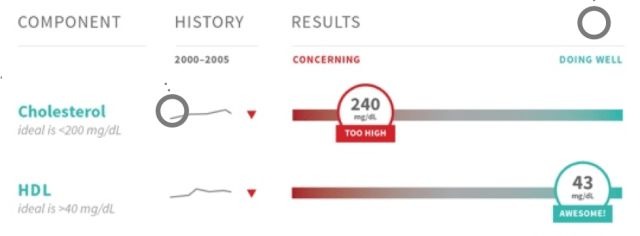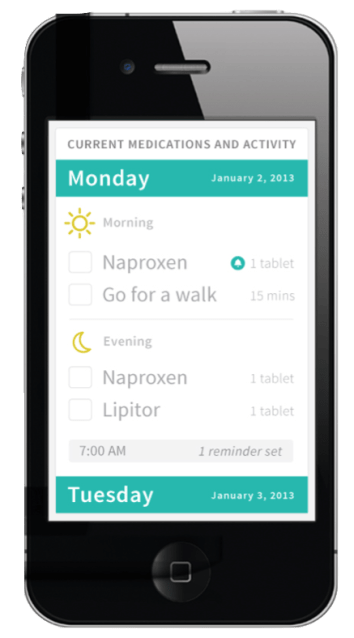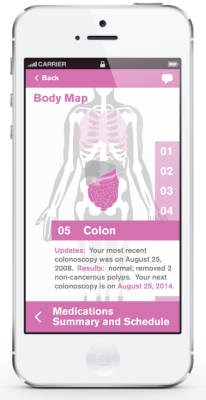The standard electronic medical record is a confusing, text-heavy computer read-out. But the winners of Designer Fund and the White House’s Health Design Challenge have created beautiful, comprehensible, mobile versions. Soon, a combination of the best of the submissions will be open-sourced and implemented as the record format for the Veterans Affair Administration and its 6 million patients.
The challenge was launched in November by the White House and a new community of philanthropic angel investors called Designer Fund. Directed by five-year Facebook designer Ben Blumenfeld and 500 Startups founding team member Enrique Allen, Designer Fund aims to advise and back designer-led startups with a positive social impact.

The Health Design Challenge to redesign the electronic medical record (EMR) was a huge success, pulling in 230 submissions compared to 80 submissions in a previous White House health challenge. Blumenfeld tells me that “from a quantity standpoint it was amazing, but from a quality standpoint too. People thought through all sorts of ways for the electronic medical record to expand and live on mobile, and have preventative care in there too.”
The overall winner called “Nightingale” from consultancy gravitytank solved many of the biggest problems with the existing EMR. Those include medication plans that are tough to understand, unintuitive formatting, impersonal statistics, and the general feel of a decades-old print-out. It will be the basis of the open-sourced final version of the downloadable medical record that other healthcare providers could adopt.
Nightingale creates an obvious hierarchy for all your health info, and uses styling to make it easy to read. Patients are shown their statistics on a scale from “concerning” to “doing well” instead of as raw numbers.

Rather than only showing your latest lab results, Nightingale puts them in context of your past tests to show how you’re trending. That’s critical, because if your latest results says your cholesterol is too high but the trend shows it’s coming down quickly, you’re actually taking the right steps and shouldn’t make drastic changes.
 Graphical timetables in Nightingale make it obvious when to take which medications. Nightingale is accessible from mobile so you can always check your dosage schedule, which will help people make sure they take the meds on schedule. You can even set email and phone alerts to remind you it’s pill-popping time.
Graphical timetables in Nightingale make it obvious when to take which medications. Nightingale is accessible from mobile so you can always check your dosage schedule, which will help people make sure they take the meds on schedule. You can even set email and phone alerts to remind you it’s pill-popping time.
Mobile was a big theme among the top submissions. Studio TACK, which took second place, laid out ailments on a body map that could be viewed on your phone. Josh Hemley’s M.ed won best medication design by creating a browsable deck of mobile medicine cards.
The challenge’s winners will split $50,000 in cash. Beyond that, Blumenfeld tells me healthcare companies he’s talked to are calling the winner’s showcase “the perfect place to recruit from.” But hopefully the winners see the real prize is helping 6 million VA patients and more truly understand their health.
